PH Male Banjo: High‑Speed One‑Touch Pneumatic Fitting for Compact Compressed‑Air Systems
The PH Male Banjo is a one‑touch pneumatic fitting engineered to enable rapid, tool‑free connection and disconnection of tubing in compressed air systems. Optimized for compact routing in confined installations, this push‑in male banjo fitting delivers reliable sealing through seal‑coated threads and an intuitive release sleeve. This article provides a comprehensive technical overview of the PH Male Banjo, covering specifications, materials, installation, performance, use cases, comparisons with alternative fittings, and long‑term maintenance guidance for industrial and automation engineers.
Introduction
Pneumatic systems in modern automation, robotics, machine tools and factory infrastructure demand components that are compact, fast to assemble and service, and that maintain leak‑free performance over many cycles. The PH Male Banjo addresses those needs by combining a one‑touch push‑in tube connection with a low‑profile male thread interface specifically configured for tight routing (the PC type with internal and external hex geometry). The design reduces assembly time, simplifies maintenance tasks, and minimizes the spatial footprint of tubing manifolds and moving assemblies.
This article is intended for technical readers—mechanical designers, maintenance engineers, pneumatic system integrators and procurement specialists—who require detailed technical data and practical guidance for selecting, installing and maintaining PH Male Banjo fittings in compressed air circuits.
Technical Overview
At its core, the PH Male Banjo is a push‑to‑connect (one‑touch) fitting that integrates a male threaded connection with a push‑in tube port. The tube end is simply pushed into the fitting until it seats, where an internal collet/retaining mechanism and a sealing element create a pressure‑tight interface. Disconnection is equally simple: pressing the release sleeve and withdrawing the tube frees the grip without tools. The male banjo form factor provides a low‑profile, rotatable connection point and allows compact routing of tubing at tight angles relative to a mating component or manifold.
Key functional attributes:
- One‑touch operation: tool‑free insertion and removal of tubing in 1–2 seconds.
- Banjo/male threaded interface: compatible with a variety of thread standards (NPT, UNF, BSPP where applicable) and available in common sizes.
- Seal‑coated threads: factory‑applied sealing improves assembly speed and helps prevent leaks at the threaded joint.
- PC type (internal/external hex): hex geometry facilitates tightening in confined locations and provides positive wrench engagement where space is limited.
- Compressed air only: designed and rated specifically for compressed air service (not for liquid hydraulic fluids).
Operation and Internal Mechanism
Internally, the fitting comprises:
- Body: supports the threaded interface and houses the collet and sealing elements.
- Collet/retainer: a toothed metal or reinforced polymer ring that grips the tubing outer diameter to resist axial pull‑out forces under pressure.
- O‑ring/seal: elastomeric element that produces the primary gas‑tight seal between the tube and fitting bore.
- Release sleeve: a slidable sleeve or ring that, when depressed, unlocks the collet teeth allowing tube extraction.
The combination of mechanical retention and an elastomeric seal produces a secure, reusable joint suitable for compressed air pressures up to the product rating.
Specifications and Dimensions
The PH Male Banjo is offered in a range of tube sizes and thread configurations to cover common pneumatic system requirements. The table below summarizes typical technical specifications and dimensional data for the family. These values are representative; refer to the specific product datasheet for precise dimensions for a chosen part number.
| Parameter | Specification / Range |
|---|---|
| Intended fluid | Compressed air only |
| Operating pressure | 0–150 PSI (0–9.9 kgf/cm², 0–990 kPa) |
| Permissible vacuum | Down to -29.5 in Hg (-750 mm Hg, approx. 10 Torr) |
| Temperature range | 32–140°F (0–60°C) |
| Tube diameters (metric) | φD = 4, 6, 8, 10, 12, 16 mm |
| Tube diameters (inch) | 5/32″, 3/16″, 1/4″, 5/16″, 3/8″, 1/2″ |
| Thread types | Imperial (1/8″, 1/4″, 3/8″, 1/2″), NPT, UNF options; model codes e.g. PH06‑1/8, PH08‑1/4, PH12‑1/2, PH 1/8‑U, PH 1/4‑N2 |
| Typical Cv (approx.) | 4 mm: 0.10, 6 mm: 0.18, 8 mm: 0.40, 10 mm: 0.60, 12 mm: 1.00, 16 mm: 1.60 |
| Seal coating | Factory applied thread sealant (type varies by supplier; typically PTFE‑based or polymeric coating) |
| Typical pull‑out force | 4 mm: 25 N, 6 mm: 45 N, 8 mm: 80 N, 10 mm: 120 N, 12 mm: 170 N, 16 mm: 260 N (static, at ambient) |
Dimensional Table — Representative Part Series
Below is a practical dimensional summary for common PH Male Banjo configurations. Values are typical; consult the manufacturer drawing for production tolerances.
| Model (example) | Tube OD | Thread | Across‑flats (hex) mm | Overall length (L) mm | Thread length (T) mm | Weight (approx.) g |
|---|---|---|---|---|---|---|
| PH04‑M5 | 4 mm | M5 x 0.8 | 7 | 22 | 6 | 6 |
| PH06‑1/8 | 6 mm | 1/8″ BSPP / NPT option | 10 | 28 | 7 | 9 |
| PH08‑1/4 | 8 mm | 1/4″ | 11 | 32 | 8 | 12 |
| PH10‑3/8 | 10 mm | 3/8″ | 14 | 38 | 9 | 18 |
| PH12‑1/2 | 12 mm | 1/2″ | 17 | 45 | 10 | 28 |
| PH16‑1/2 | 16 mm | 1/2″ / 7/16″ UNF option | 22 | 55 | 12 | 45 |
Materials and Build Quality
The PH Male Banjo is designed to balance mechanical strength, chemical compatibility with compressed air system environments, and low manufacturing cost. Typical material selections used across the product family are described below. Exact material compositions may vary by supplier or product revision; consult the vendor’s material specification for compliance with particular environmental or regulatory requirements (e.g., food contact, medical applications, RoHS).
| Component | Typical Material | Function / Technical Advantage |
|---|---|---|
| Fitting body | Brass (CuZn) or zinc‑plated brass; stainless steel for heavy‑duty variants | Corrosion resistance, machinability, leak‑tight threading; stainless option for higher corrosion environments |
| Collet (retainer) | Stainless steel or carbon steel with corrosion‑resistant plating | High tensile strength for repeatable pull‑out resistance; precise tooth geometry for secure grip |
| Release sleeve | Thermoplastic (POM/acetal) or metal sleeve for PC type | Low friction for smooth release; durability for cyclic operation |
| Seals / O‑rings | NBR (nitrile) standard; FKM available for higher temperature / oil resistance | Elastomeric gas sealing; NBR optimized for compressed air and water‑based lubricants |
| Thread seal coating | Polymeric or PTFE‑based factory coating | Reduces need for field PTFE tape; consistent sealing and reduced assembly torque |
The PC type variants incorporate an external and internal hex geometry: an external hex for tightening with a wrench and an internal hex recess for selecting a smaller wrench or socket for installation in extremely confined spaces. This geometry ensures reliable wrenching points without adding bulk to the fitting’s profile.
Key Features
The PH Male Banjo is engineered with features that simplify system design and accelerate assembly and maintenance cycles. The following sections break these out in technical terms.
One‑Touch Push‑In Connectivity
- Push insertion creates a trapped mechanical engagement and elastomeric seal in a single motion.
- Release sleeve allows quick tube removal without tools—a major time saver during maintenance or reconfiguration.
- Allows frequent tube changes and supports fast cycle time operations common in assembly automation lines.
Low‑Profile Banjo Form Factor
- Compact profile minimizes space requirement at the threaded port, enabling routing near walls, panels, or between closely‑spaced components.
- Rotational freedom at assembly reduces twisting forces on tubing runs and simplifies routing orientation.
Seal‑Coated Threads
- Factory‑applied seal coating reduces assembly steps and prevents sealing errors that can arise from improper tape wrapping or overuse of sealant.
- Consistent torque and sealing behavior improves first‑pass yield in assembly lines.
PC Type Internal/External Hex
- Dual hex geometry permits installation in tight locations where only limited wrench access is available.
- Prevents rounding of flats and facilitates accurate tightening to torque guidelines.
Wide Range of Tube and Thread Sizes
- Supports metric and imperial tubing systems, easing integration into global installations.
- Available with a variety of thread standards to match manifold, valve and actuator interfaces.
Use Cases and Applications
The PH Male Banjo is designed for compressed‑air applications where compact routing, fast assembly, and frequent maintenance are important. Below are example use cases across multiple industries.
Industrial Automation and Assembly Lines
Robotic end‑effectors, pneumatic grippers, and pick‑and‑place tooling often require short, direct connections to valves and actuators in confined spaces. The PH Male Banjo’s low profile and quick‑connect functionality enable rapid tool changes and reduce downtime during production changeovers.
Packaging Machinery
Packaging machines typically execute very high cycle counts and periodically replace tubing during product changeovers. Fast push‑in connections accelerate maintenance and reduce line stoppages.
Laboratory and Instrumentation Systems
Benchtop pneumatic instruments and test rigs benefit from compact fitting designs that allow dense porting on manifolds and instrument panels. The banjo format reduces clutter and the risk of tubing interference.
Machine Tools and Fixtures
Clamping fixtures and pneumatic tool feeds that require frequent reconfiguration or seasonal changes can exploit the tool‑free disconnection offered by the PH Male Banjo.
Vehicle and Mobile Equipment (Non‑Hydraulic Applications)
Where compressed air is used on mobile platforms (e.g., service trucks, pneumatic controllers) and space is constrained, the PH Male Banjo provides compact, reliable connections. Note: product is rated for compressed air only; avoid exposure to hydraulic fluids or fuels unless the vendor explicitly certifies compatibility.
Comparison with Similar Fittings
To assess the PH Male Banjo’s suitability for a given application, compare it to other common fitting types: standard straight male push‑in fittings, elbow push‑ins, and swivel male fittings. The table below summarizes functional tradeoffs.
| Characteristic | PH Male Banjo | Straight Push‑In Male | Elbow Push‑In | Swivel Male |
|---|---|---|---|---|
| Profile / Space | Very low profile; optimized for tight clearances | Moderate; straight protrudes from port | Moderate; changes direction but may add height | Higher profile; swivel adds bulk |
| Rotation / Orientation | Rotatable banjo orientation; helps routing in dense assemblies | Fixed orientation | Fixed at 90°; orientation set by body | Rotatable; useful when mating orientation is variable |
| Ease of Installation | Very easy; seal‑coated threads reduce sealing steps | Easy; thread sealing normally required | Easy; may need tape/sealant | Moderate; swivel requires correct pre‑tightening |
| Leak Risk | Low when installed per instructions (factory seal coating) | Low to moderate depending on sealant quality | Low to moderate | Low if properly tightened and torqued |
| Cost | Moderate (value for compact design) | Lowest | Slightly higher than straight | Higher due to swivel mechanism |
| Best use | Confined spaces, frequent maintenance | General purpose lines | Space where direction change required | Mating to misaligned ports or rotating assemblies |
Benefits and Limitations
Benefits
- Reduced installation time: One‑touch connection eliminates wrapping tape or applying liquid sealants on the tubing side and simplifies threaded joint sealing through factory coating.
- Compact footprint: Banjo configuration allows tubing to be routed close to adjacent components, reducing interference and improving machine layout density.
- Serviceability: Rapid, tool‑free disconnection supports routine maintenance and minimizes production downtime.
- Consistent sealing: Factory applied thread sealant and a controlled O‑ring interface reduce variability in joint performance.
- Wide selection: Availability across multiple tube sizes and thread options simplifies BOM standardization across mixed systems.
Limitations and Technical Considerations
- Intended fluid restriction: The fitting is designed for compressed air only—do not use with hydraulic fluids, aggressive chemicals, or gases other than dry, lubricated, or instrument‑grade air unless explicitly approved by the manufacturer.
- Temperature range: Standard seals (NBR) limit continuous use to 0–60°C (32–140°F). If elevated temperatures are expected, select FKM seals or a high‑temperature variant.
- Pressure limit: Maximum rated pressure is 150 PSI. Do not operate above the rated pressure or where pressure spikes exceed the rating.
- Tube compatibility: Ensure tubing material and hardness are suitable for push‑in retention (e.g., polyamide/Nylon, PUR) and that the correct outer diameter and wall thickness are used to achieve the rated pull‑out forces.
- Vibration and dynamic loading: For applications with high vibration or cyclic axial loads, confirm that the selected tube material and collet engagement provide adequate retention; consider retaining clips or crimped fittings for extreme cases.
- Thread standardization: Thread configurations (NPT vs BSPP vs UNF) are not interchangeable—ensure mating port and thread standard match the selected part number.
Installation and Maintenance Guide
Correct installation and periodic maintenance ensure the PH Male Banjo delivers reliable, leak‑free service life. The following steps and recommendations provide a professional, engineering approach to installation, testing and upkeep.
Pre‑Installation Checklist
- Verify part number and confirm tube OD and thread standard match the system requirements.
- Inspect fitting for shipping damage, contaminant ingress or missing release constituents.
- Select tubing material compatible with compressed air and the fitting’s collet design (common: Nylon/PA, PU).
- Confirm environmental compatibility with material selection—e.g., use stainless variants for salty or corrosive atmospheres.
Installation Procedure
- Clean mating thread and port to remove any debris from the assembly area.
- Hand‑engage the male thread into the port. For parallel threaded ports (BSPP), tighten until hand snug and then use a wrench on the external hex to final torque recommendation (if provided by manufacturer). For tapered threads (NPT), tighten until finger tight then typically 1–2 wrench turns; however, follow vendor torque guidance where available.
- The PH Male Banjo is supplied with a factory seal coating. In most cases, additional PTFE tape or liquid sealant is not necessary and may interfere with the intended sealing characteristics—verify manufacturer guidance before adding supplemental sealants.
- After threading, if the design includes an external hex, use an appropriate wrench on the hex flats; if space is constrained, use the internal hex option with the correct socket.
- Insert the tubing: support the tubing end and push squarely into the fitting until you feel it seat. For reliable assembly, mark the tube end at the insertion depth to confirm seating.
- Perform a leak test at working pressure (see below) after full system assembly.
Recommended Leak Test
- Pressurize the system to operating pressure (or to a commissioning test pressure not exceeding rated maximum).
- Apply a soap solution or approved leak detection fluid at the threaded and tubing joints to look for bubbles—do not use flammable solvents for leak detection.
- Monitor pressure drop using calibrated gauges. Acceptable leakage rates depend on system design—compressor systems typically allow very low leak rates; for instrument lines, zero detectable leakage is the goal.
Maintenance and Inspection
- Visual inspection frequency: include fittings in scheduled preventive maintenance intervals. Look for cracks in the sleeve, corrosion on metal faces, or permanent deformation of the tubing near the seal.
- Functional inspection: periodically pull on tubing to verify retention (do this with the system depressurized). Confirm the collet teeth have not been damaged.
- Seals: replace O‑rings if exposed to chemical attack, cuts, hardening, or if persistent leaking occurs after reassembly.
- Cleaning: avoid aggressive solvents that can degrade plastics or elastomers. Wipe metal parts and polymer sleeves with isopropyl alcohol or mild soapy water as recommended.
- Replacement intervals: for high duty‑cycle applications, plan part replacement as part of the maintenance schedule based on cycle counts or years of service per OEM guidance.
Troubleshooting Common Issues
- Leak at thread: Confirm that the thread standard matches and that the factory coating is intact. If leak persists, disassemble, clean threads, and reassemble per torque guidance; if necessary, use an approved thread sealant consistent with the manufacturer’s instructions.
- Leak at tube interface: Check for damaged or contaminated tube end; cut 3–5 mm off the tube end to create a fresh square face and reinsert. Inspect O‑ring condition and replace if necessary.
- Difficulty inserting tube: Ensure tube is cut square and burr‑free. Lubricate the tube end lightly with a compatible pneumatic lubricant if advised by the tubing manufacturer (do not use lubricants that degrade elastomers).
- Collet won’t release: Depress the sleeve fully and, with system depressurized, twist the tubing while pulling to assist release. If the collet appears jammed, verify that debris has not lodged between the collet and sleeve; disassemble and clean if required.
Selecting the Right Variant
Choosing the correct PH Male Banjo variant involves matching tubing ID/OD, thread type and size, material compatibility and the environmental conditions of the application. Consider the following decision factors:
- Tubing material and OD/ID: Select the tube size consistent with flow requirements and pressure drop targets; ensure the outer diameter matches the fitting’s specified OD tolerance.
- Thread standard: Identify whether your mating port is tapered (NPT) or parallel (BSPP/UNF), and choose accordingly to avoid mis‑mating.
- Seal material: NBR is common for standard compressed air; for elevated temperature or oil exposure, upgrade to FKM seals.
- Material corrosion resistance: For outdoor or corrosive environments, choose a stainless steel body variant where available.
- Flow capacity: Match the Cv of the fitting to the flow requirements in actuators and valves to avoid pressure drop that can reduce performance.
Application Examples and Design Considerations
Below are a few real‑world design and application scenarios that highlight how the PH Male Banjo integrates into system designs.
Example 1 — Robotic Pneumatic Gripper
A robotic gripper requires multiple pneumatic supply lines that route through a wrist joint with very limited radial clearance. Using PH Male Banjo fittings on the manifold mounted to the wrist reduces the axial length of the fittings, preventing interference with adjacent tooling, and allows quick changeout of worn tubing without removing the robot end effector.
Example 2 — Packaging Line Quick Changeover
A packaging machine must switch between product sizes daily, requiring reconfiguration of pneumatic pick‑and‑place vacuum circuits. Installing PH Male Banjo fittings on quick‑release manifolds provides operators the ability to rapidly change tube routing and sizes during setup, significantly reducing changeover time.
Example 3 — Panel Mount Instrumentation
An instrument panel with multiple densely packed ports benefits from the banjo’s compact form. The reduced projection from the panel face allows more ports to be grouped together while keeping tubing runs orderly and serviceable.
Regulatory and Safety Considerations
When integrating PH Male Banjo fittings into a system, observe general pneumatic system safety and regulatory practices:
- Do not exceed rated pressure and temperature limits.
- Ensure pressure relief devices are present in system designs where overpressure could occur.
- Use only tubing materials and seal compounds compatible with the intended environment and any applicable regulatory regimes (e.g., food or pharmaceutical environments may require special materials or certificates).
- Train maintenance personnel in proper depressurization procedures before disconnecting fittings.
Procurement and Part Numbering
PH Male Banjo product codes typically follow a structured format that encodes model type, tube diameter and thread size. Example codes include:
- PC 06 1/8 — PC type with 6 mm tube diameter and 1/8″ thread
- PH04‑M5 — PH family, 4 mm tube with M5 thread
- PH06‑1/8 — PH family, 6 mm tube with 1/8″ thread
- PH08‑1/4 — PH family, 8 mm tube with 1/4″ thread
- PH12‑1/2 — PH family, 12 mm tube with 1/2″ thread
- PH 1/8‑U — PH family with 1/8″ UNF thread variant
When ordering, specify:
- Model family (PH, PC, etc.)
- Tube OD (metric or inch)
- Thread type and size (e.g., 1/4″ NPT, 1/4″ BSPP, M5, UNF)
- Seal material if alternative is required (NBR standard or FKM option)
- Body material option if stainless steel or plated variants are needed
Environmental and Lifecycle Considerations
From a lifecycle and sustainability perspective, the PH Male Banjo’s repairable design (replaceable seals and easy tubing changes) extends the usable lifetime of system components compared to permanently crimped or glued connector systems. When end of life is reached, material separation for recycling is facilitated by the combination of metal and polymer components; choose a supplier with documented end‑of‑life or material reclamation practices if sustainability is a program requirement.
Conclusion
The PH Male Banjo is a technically capable one‑touch pneumatic fitting designed for compressed air applications that demand compactness, fast assembly and straightforward maintenance. Its banjo form factor and PC internal/external hex geometry provide advantages in tight assemblies, while factory seal‑coated threads and the push‑in collet interface reduce assembly variability and downtime. Engineers should evaluate the PH Male Banjo when selecting fittings for high‑cycle automation, crowded manifolds, and equipment that benefits from rapid tube changes.
When specifying these fittings, confirm tube compatibility, thread standard matching, operating conditions (pressure, temperature, vacuum), and select appropriate material/seal options for the environment. Proper installation, periodic inspection and adherence to recommended maintenance practices will maximize reliability and the operational lifetime of the fitting within a pneumatic system.
Appendix — Quick Reference
- Operating Pressure: 0–150 PSI (0–9.9 kgf/cm², 0–990 kPa)
- Permissible Vacuum: Down to -29.5 in Hg (-750 mm Hg, approx. 10 Torr)
- Temperature Range: 32–140°F (0–60°C) (NBR seals standard)
- Tubing Sizes: Metric φD = 4, 6, 8, 10, 12, 16 mm; Inch 5/32″, 3/16″, 1/4″, 5/16″, 3/8″, 1/2″
- Common Part Examples: PH04‑M5, PH06‑1/8, PH08‑1/4, PH12‑1/2, PH 1/8‑U, PH 1/4‑N2
For specific product drawings, detailed torque recommendations, or certification documentation, contact the supplier or consult the official product datasheet for the exact PH Male Banjo variant you intend to use.

 Tiếng Việt
Tiếng Việt
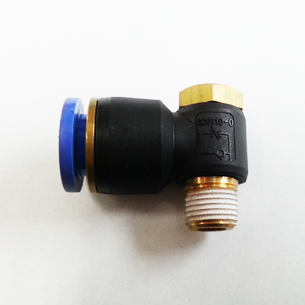
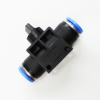
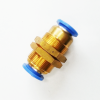
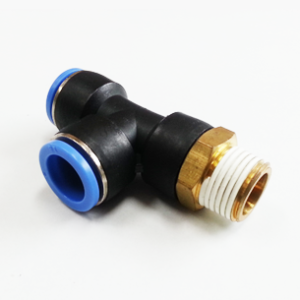
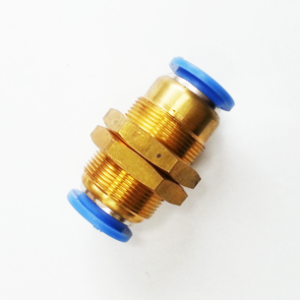
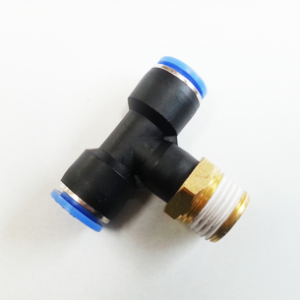
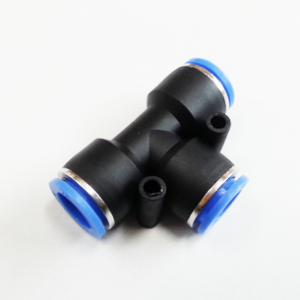
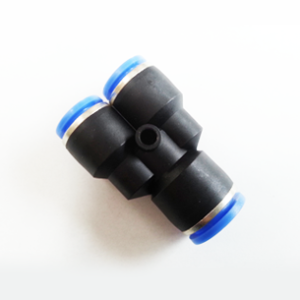
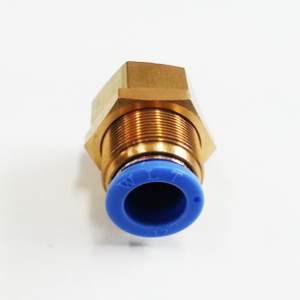
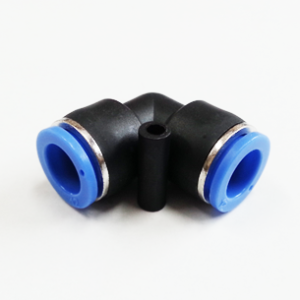
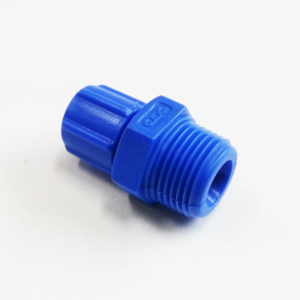
Reviews
There are no reviews yet.